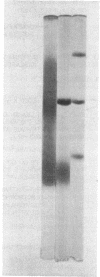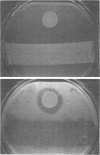Abstract
Staphylococcus aureus 462 is one of three bacteriocin-producing strains selected for study from 200 isolates of staphylococci of animal origin. These bacteriocins are specific in their activity, inhibiting the growth of certain strains of S. aureus and other gram-positive species, but not gram-negative organisms. Staphylococcin 462 was not found in significant concentrations in the supernatant fluid of broth cultures, nor was it released into the suspending liquid when the cells were mechanically disrupted. However, extraction of the cells with 7 M urea resulted in the liberation of much of the activity. The material was purified by gel permeation chromatography by using Sephadex G-200 and by preparative electrophoresis on polyacrylamide gels in the presence of sodium dodecyl sulfate. Chemical analysis showed that the material consisted of roughly 90% protein and 3% lipid. The molecular weight of sodium dodecyl sulfate-dissociated staphylococcin 462 was calculated to be about 9,000.
Full text
PDF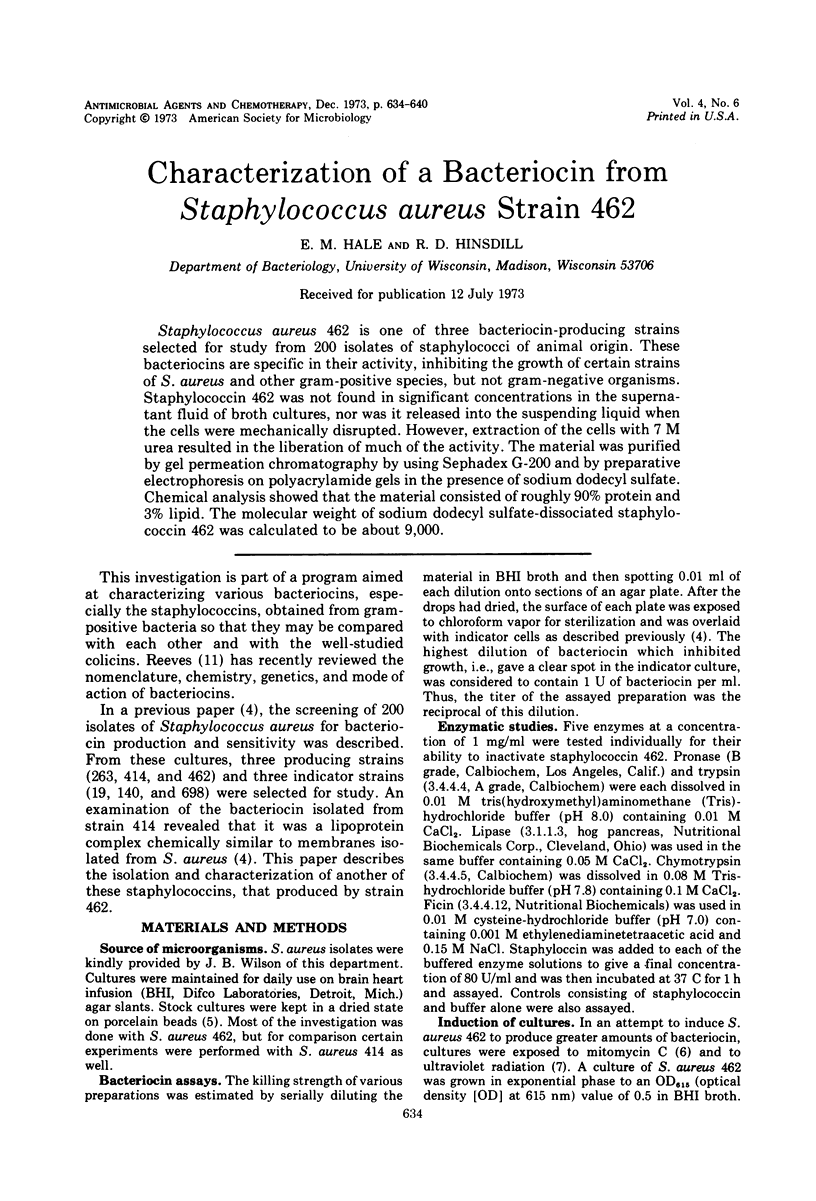
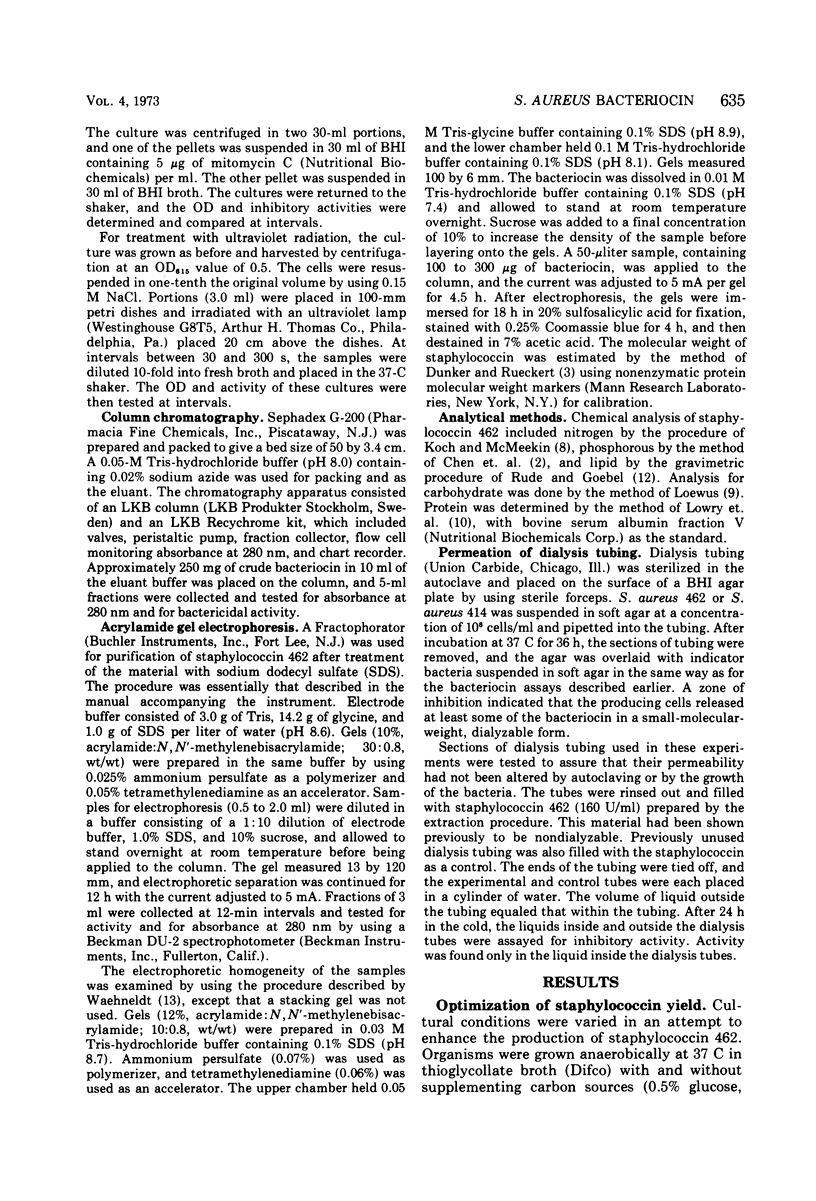
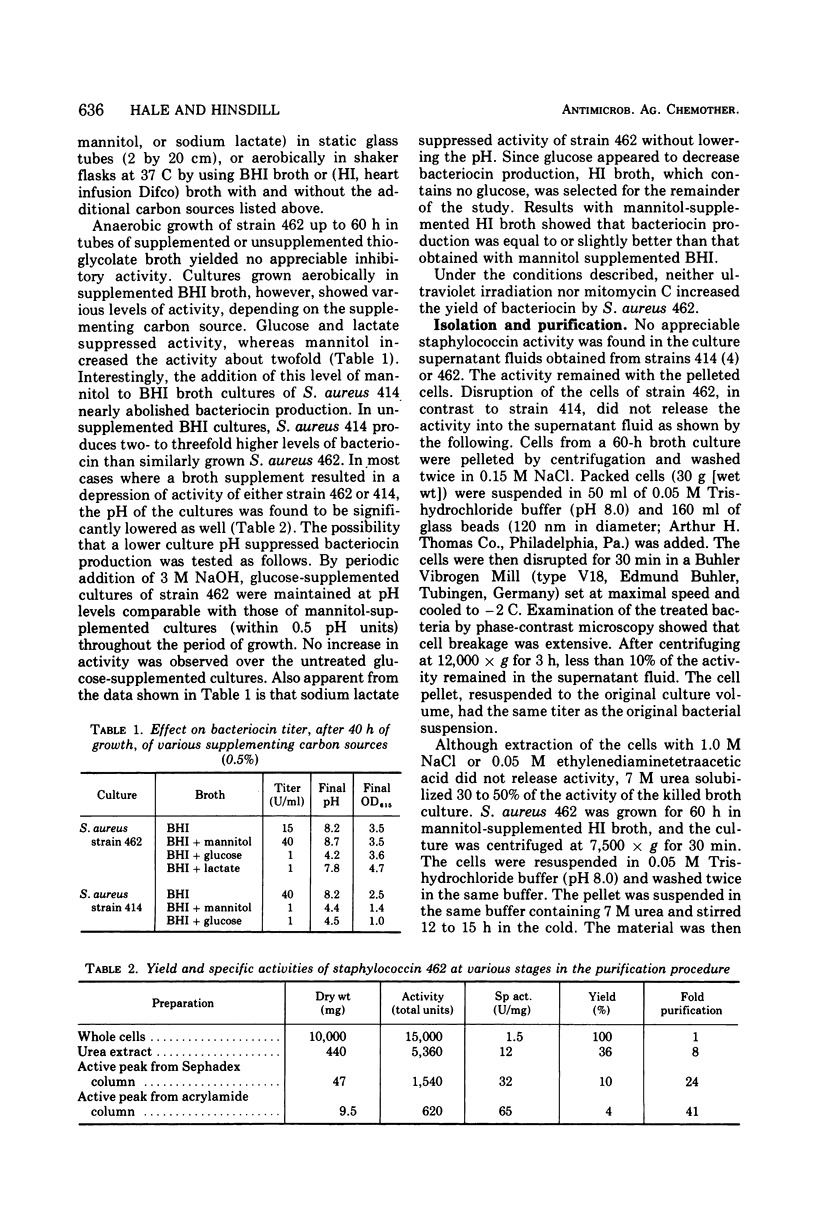
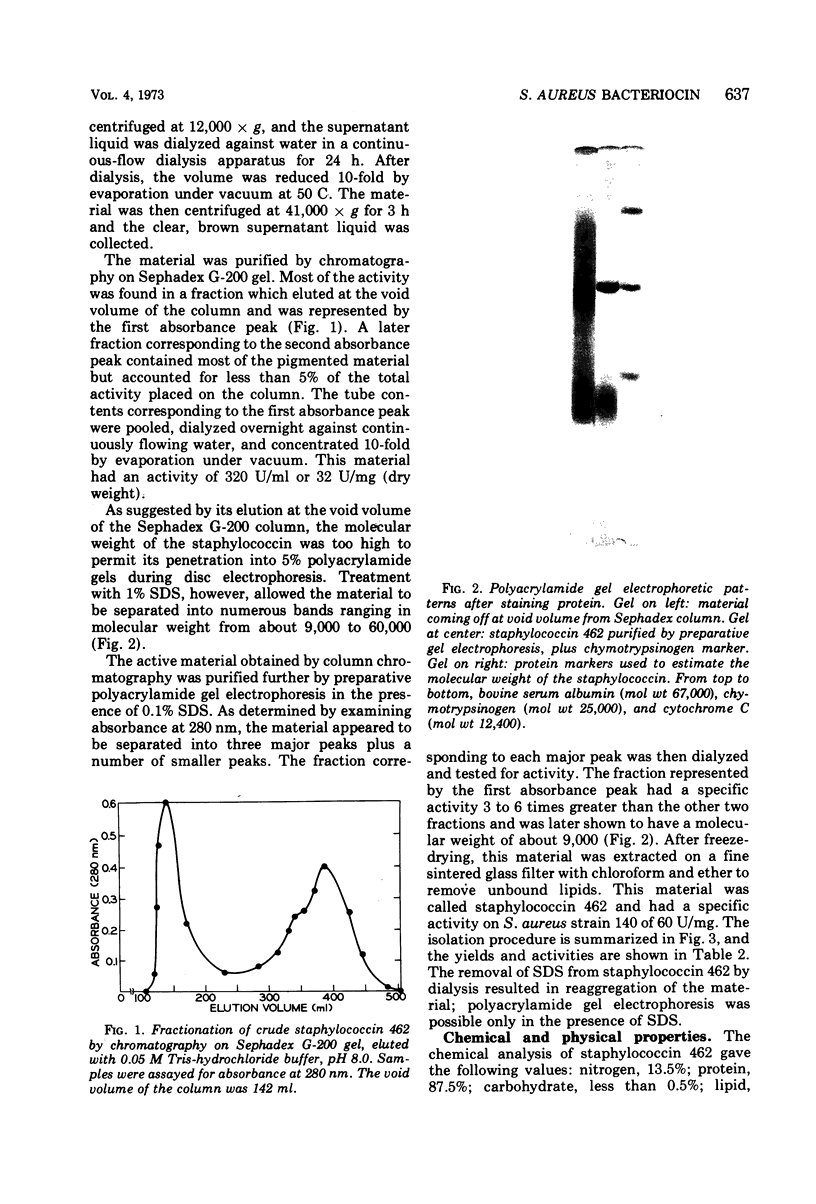
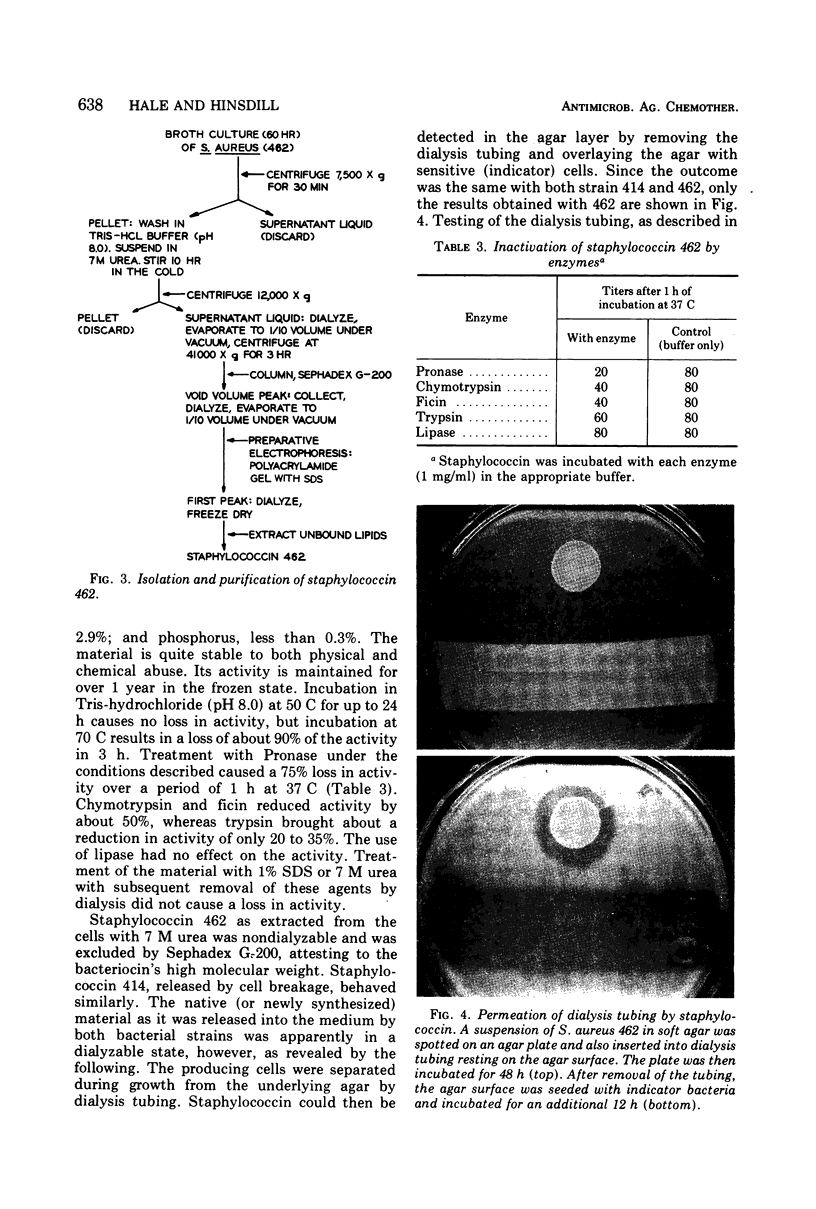
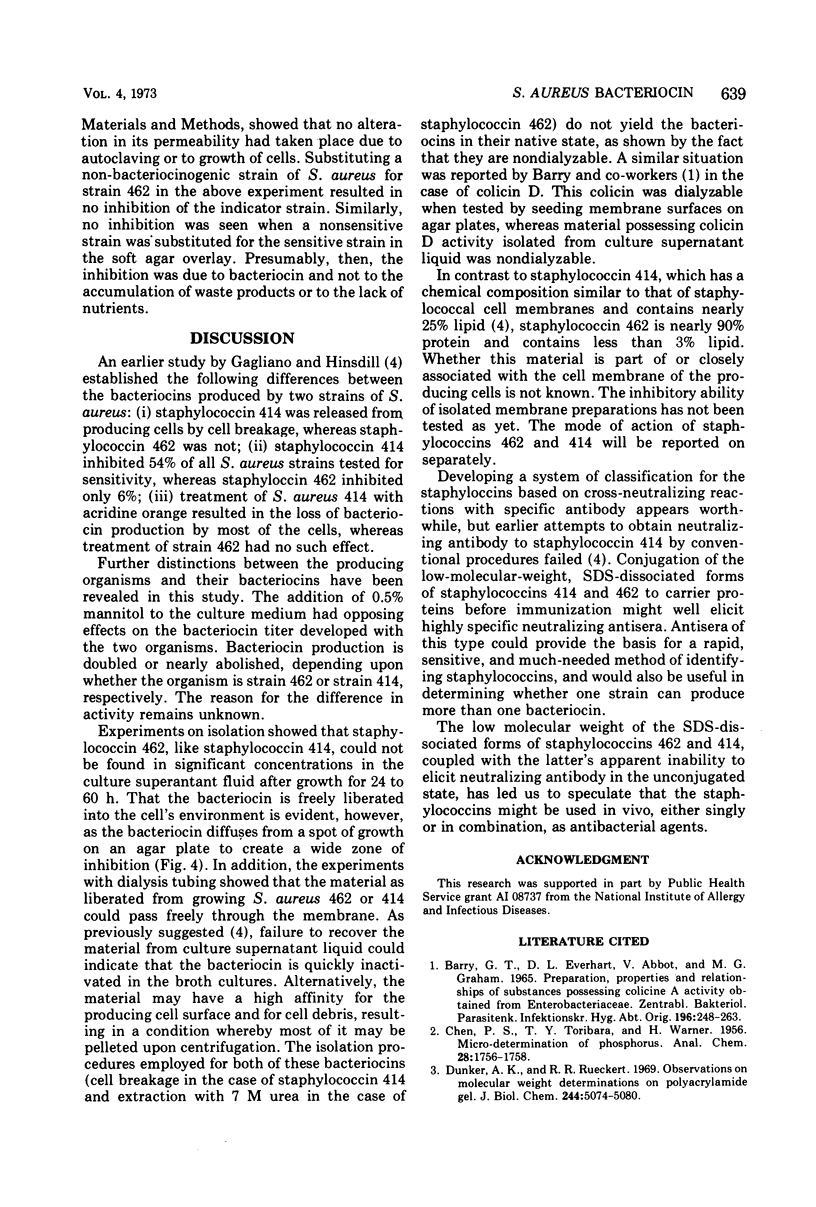
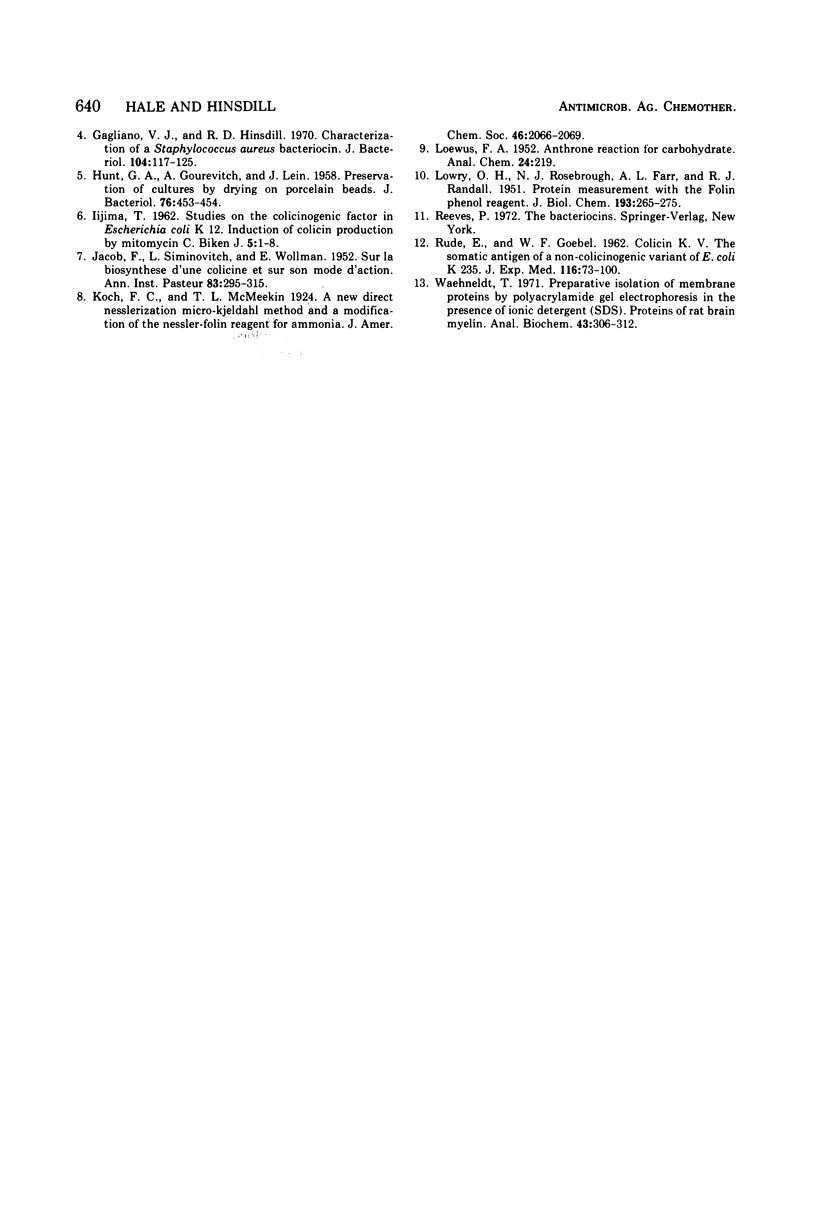
Images in this article
Selected References
These references are in PubMed. This may not be the complete list of references from this article.
- Dunker A. K., Rueckert R. R. Observations on molecular weight determinations on polyacrylamide gel. J Biol Chem. 1969 Sep 25;244(18):5074–5080. [PubMed] [Google Scholar]
- Gagliano V. J., Hinsdill R. D. Characterization of a Staphylococcus aureus bacteriocin. J Bacteriol. 1970 Oct;104(1):117–125. doi: 10.1128/jb.104.1.117-125.1970. [DOI] [PMC free article] [PubMed] [Google Scholar]
- HUNT G. A., GOUREVITCH A., LEIN J. Preservation of cultures by drying on porcelain beads. J Bacteriol. 1958 Oct;76(4):453–454. doi: 10.1128/jb.76.4.453-454.1958. [DOI] [PMC free article] [PubMed] [Google Scholar]
- JACOB F., SIMINOVITCH L., WOLLMAN E. Sur la biosynthèse d'une colicine et sur son mode d'action. Ann Inst Pasteur (Paris) 1952 Sep;83(3):295–315. [PubMed] [Google Scholar]
- LOWRY O. H., ROSEBROUGH N. J., FARR A. L., RANDALL R. J. Protein measurement with the Folin phenol reagent. J Biol Chem. 1951 Nov;193(1):265–275. [PubMed] [Google Scholar]
- RUEDE E., GOEBEL W. F. Colicine K. V. The somatic antigen of a non-colicinogenic variant of E. coli K235. J Exp Med. 1962 Jul 1;116:73–100. doi: 10.1084/jem.116.1.73. [DOI] [PMC free article] [PubMed] [Google Scholar]
- Waehneldt T. V. Preparative isolation of membrane proteins by polyacrylamide gel electrophoresis in the presence of ionic detergent (SDS): proteins of rat brain myelin. Anal Biochem. 1971 Sep;43(1):306–312. doi: 10.1016/0003-2697(71)90139-4. [DOI] [PubMed] [Google Scholar]



